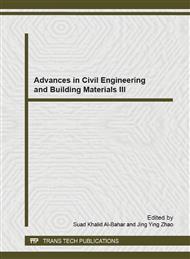p.276
p.282
p.287
p.293
p.299
p.307
p.314
p.321
p.326
The Motivation and Restriction Mechanisms of Emission Trading in the Tai Lake Basin
Abstract:
This paper offers a Government-Enterprise-Public cooperation mode of emission trading in the Tai Lake Basin based on the governing theory of the common pool resources. Then, the motivation and restriction mechanisms have been designed, that is, a water environmental regulation contract with the effect of incentive and constraint penalty is signed between the water environmental management institute and the enterprises. Further, a principal-agent model is developed, by which a set of results of the water environment regulation optimal contract is obtained. The effects of public participation and local government protection probability on the contract are analyzed. The results show that the increase of public participation could decrease the optimal fine amount, which will weaken the contradictions between the local government and the enterprises, and the decrease of the local government protection probability would reduce the regulatory frequency, correspondingly the supervision cost will be low.
Info:
Periodical:
Pages:
299-303
Citation:
Online since:
December 2013
Authors:
Price:
Сopyright:
© 2014 Trans Tech Publications Ltd. All Rights Reserved
Share:
Citation:


